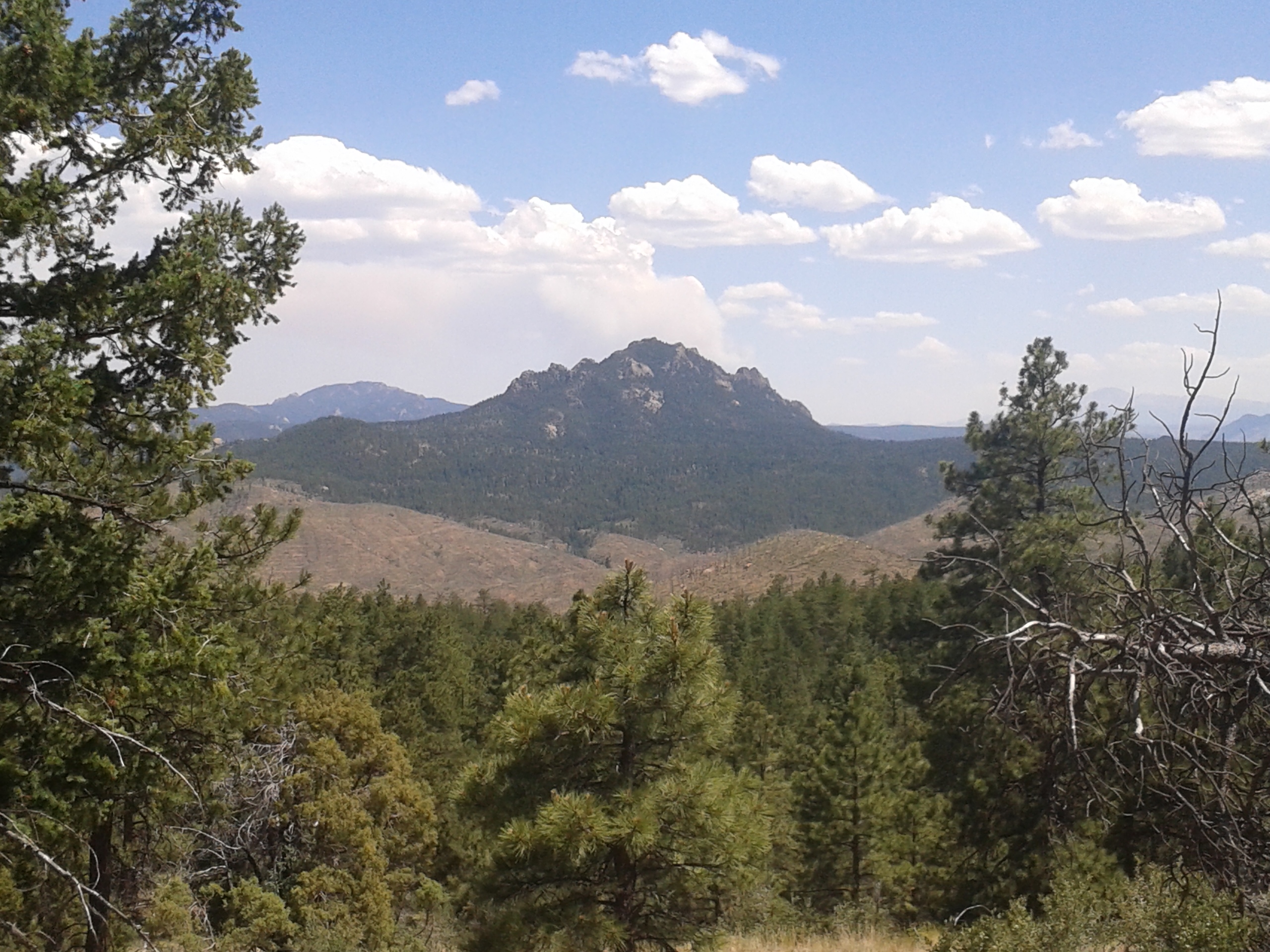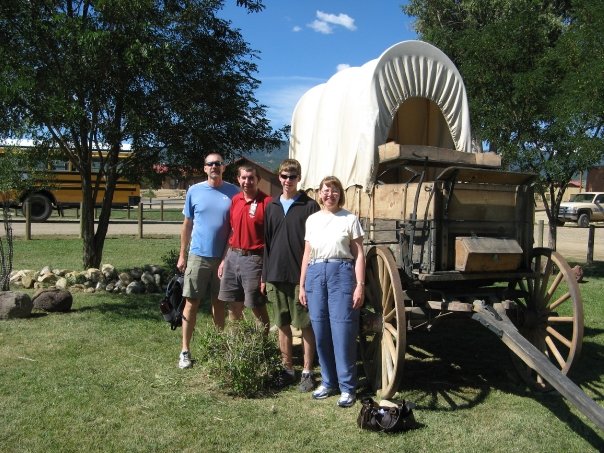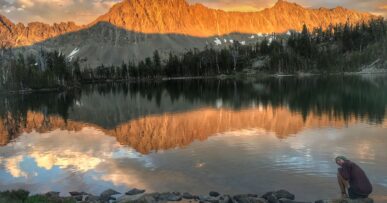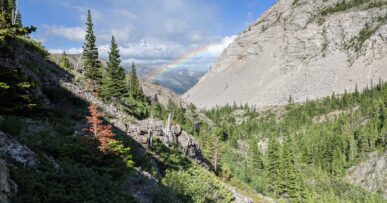
Charging up the climb out of South Platte Canyon, I played leap frog with a team of cyclists and an equestrian couple through the mid-morning heat. I can’t pretend I wasn’t jealous of their various, faster mounts; particularly of Leslie’s mule’s dainty, sure hooves. Man, if I had a second pair of legs to trade out…well, I’d be unstoppable.
Happy for the bandana soaked in cool river water and my constant trail companion Rainbow Sun Hat, I moved into 12 miles of terrain which had been stripped by the 1996 Buffalo Creek Fire. Faces of 1.1 million year old Pikes Peak Granite emanated rosily from beneath domes of scorched earth, adorned by yucca, indian paintbrush, and other disturbance loving plants. But no shade, making the already hot weather even more challenging.
The bare earth made formations such as Long Scraggy Peak stand out in dramatic contrast. As I hiked along, admiring the massive, standing shards of rock, a hawk soared up from one particularly tall and unique formation. I laughed upon distinguishing the shape and realized, “that mountain just flipped me the bird!” Literally.

From only two ridges back a billow of smoke marked the High Park Fire. It coated the back of my throat, planting an interminable itch which neither water nor dirty finger could quell. As of today, “The High Park Fire has burned 87,284 acres and is 75 percent contained.” As other fires spring up and tear across the state I watch the Trail Forum closely and give thanks for those fighting to protect us from such catastrophes.
Through the thickly forested lowlands the flowers: Columbines and skyrockets, clustered close into drying drainages. They demonstrate much my same impression of the low water conditions. Though I can smell it, and the green of the surrounding shrubs tell of water in the earth, it is trickling and muddy in most places, giving rise to the eternal hiker question: pump or purify? I’ve done fine with a bandana, wide mouth Gatorade bottles and Aquamira; but the mosquitoes love it.
At 8000 ft we encountered the first groves of Aspen. The largest living organism on the planet:
Aspen typically grow in large colonies which are clones derived from a single seedling, and spread by root suckers. New stems in the colony can appear 130 feet from the parent tree. An individual tree can live for 40-150 years above ground, but the root system of the colony is long-lived and can be thousands of years old. ~Dr. Joanne Stolen
Winding along ridges and up from valleys, the trail climbed slowly higher into the Lost Creek Wilderness Area where 2fer and I tackled the steep old fire roads and haphazard switchbacks. For a day we followed up a creek meadow alley which threw me back to the hike to Beaubien in Philmont. I reflected on my cousins, Brian and Travis who are out there this summer, carrying on a proud family tradition and forging their own bright futures. We are proud of you boys!







Comments (1)
Bethany I love your blogs when you are on the trail. You are so expressive! Dewey and I were tickled you said something about our boys! I get to see them in less than a week! Hope the fires don’t cause you a problem. Take care, Jeannine